The University Museum posted about this quilt a few weeks ago on our social media after we identified it during our ongoing inventory project. Since then…I have become a little bit obsessed with it, for a number of reasons.
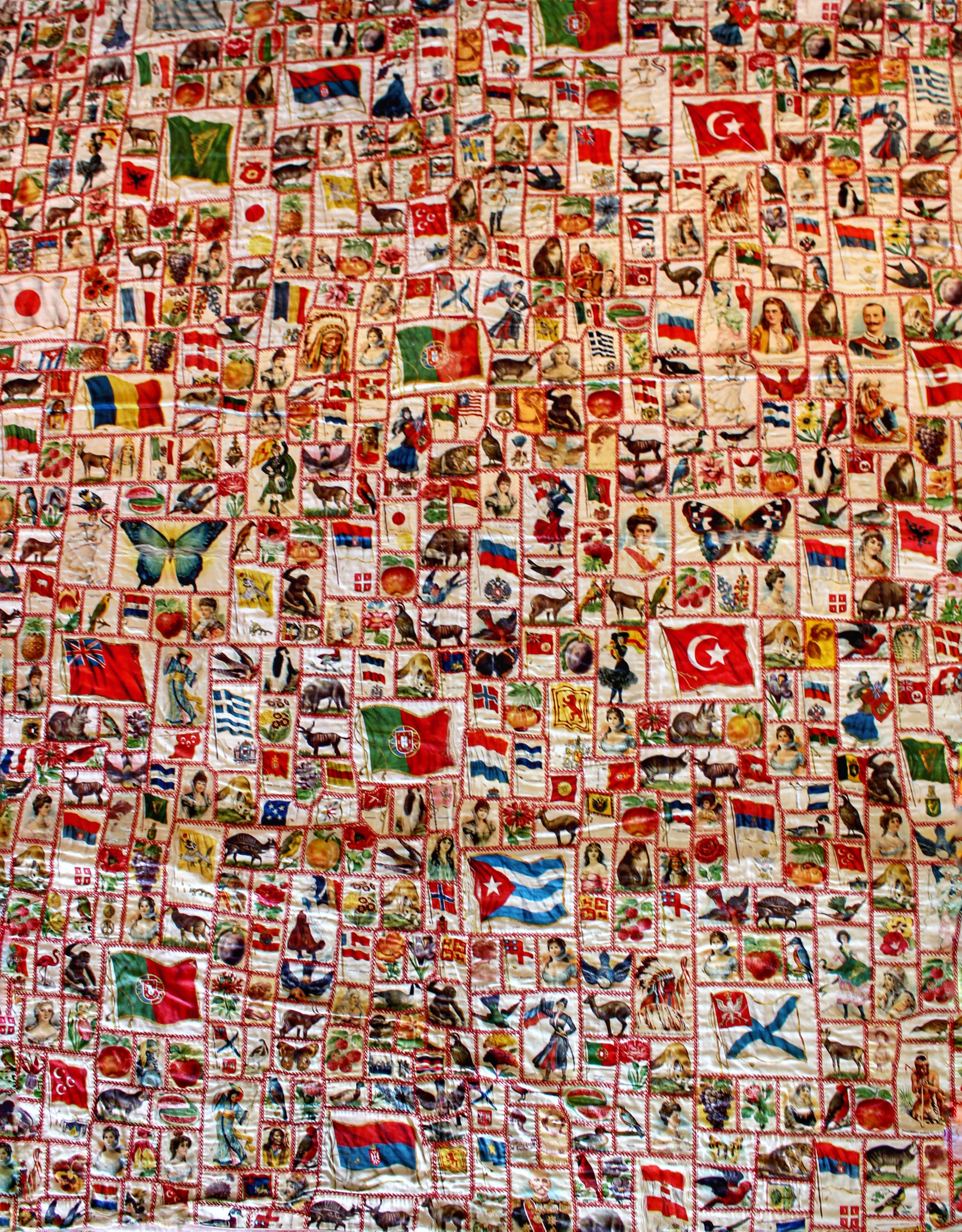
Almost-full shot of the quilt made of cigarette silks from the Estate of Mr. Robert W. Boney, likely made by his wife Mrs. Angie B. Boney. University Museum 1973.07.01.
First, it is visually stunning. The quilt is rather large, which makes it almost impossible to take a full photograph without a proper setup. (I stood on a desk to take this one). When viewed in its entirety, all the variously sized silk rectangles pieced together with careful, red, feather stitches create a vibrant assortment of shapes and colors. Some immediately stand out and grab your attention, like the large flags of Turkey, the Blue Ensign of the United Kingdom, Portugal, and Cuba. The sheer number of pieces make it challenging to focus in on any of the of the smaller images for too long. When you look closer, you see a wide assortment of portraits, animals, plants, and smaller country flags, all with tiny black lettering underneath that identifies them. Although not as geometrically varied as “crazy quilt” patterns, the quilt replicates almost-frenetic energy that can come from a textile assembled from diverse parts.
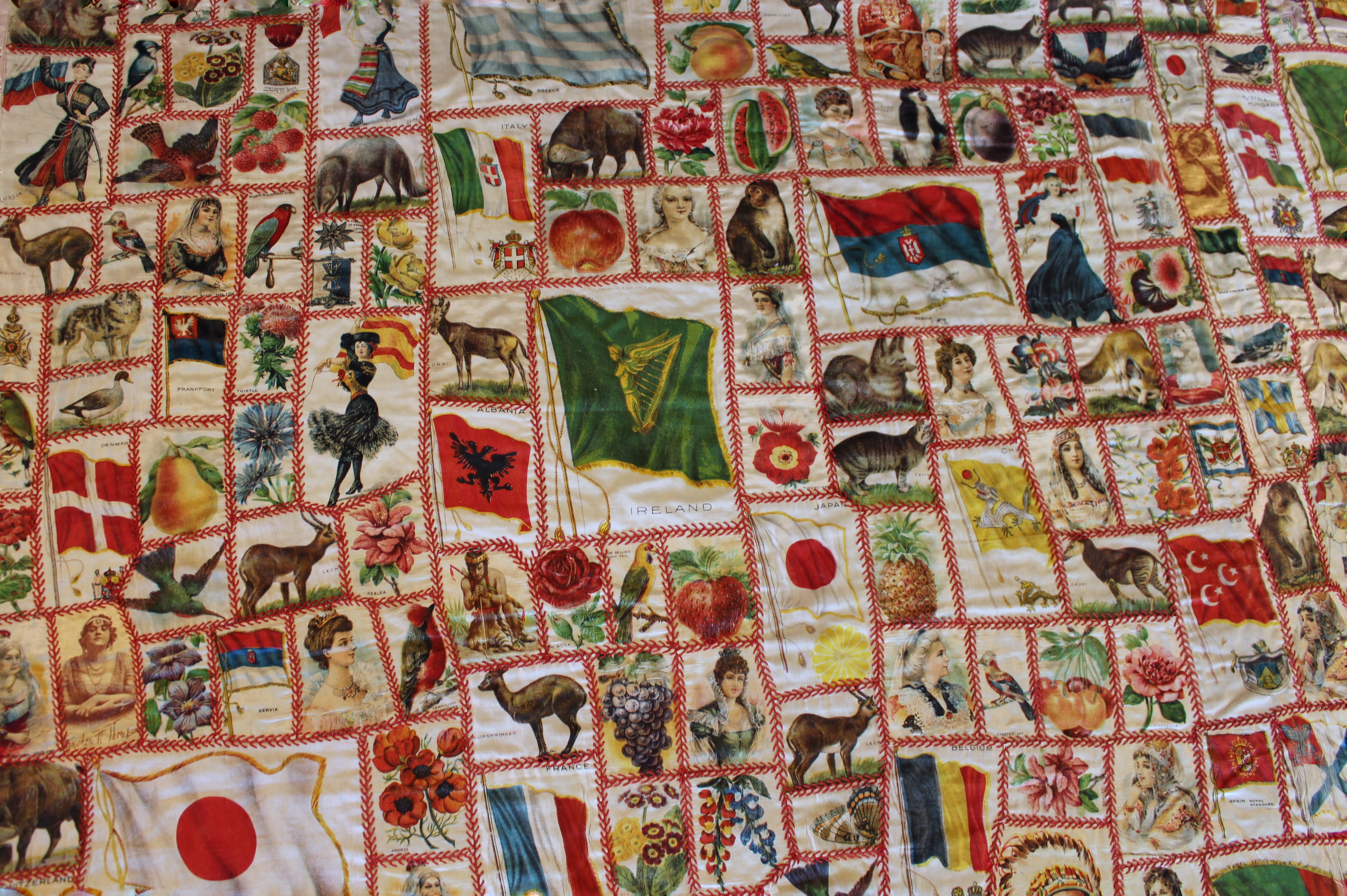
Second, the history of the quilt tells a fascinating story about family life and consumerism in the early 1900s. The quilt came to the museum through a donation from Robert E. Boney as part of a collection of items from the estate of his father Robert W. Boney. Robert W. Boney was a comptroller at NMSU in the 1930s and 40s, during which time he lived in Las Cruces with his wife Angie B. Boney. The individual silk squares on the quilt are premiums—or promotional items—packaged with purchase of cigarettes. Smaller silks would be placed inside cigarette packages to be discovered by the purchaser, while larger silks could be exchanged with tobacco coupons. As an early form of targeted marketing, cigarette companies advertised the premiums as collectible items and encouraged (particularly women) to gather as many as possible and create household items from them. Our accession records and the subjects of the silks date this quilt to the early 1900s, and it is likely Mrs. Angie Boney made this quilt from premiums collected from the family’s cigarette purchases. Although a few separate companies are represented in the quilt, someone in the Boney family apparently had a particular affinity for Nebo cigarettes.
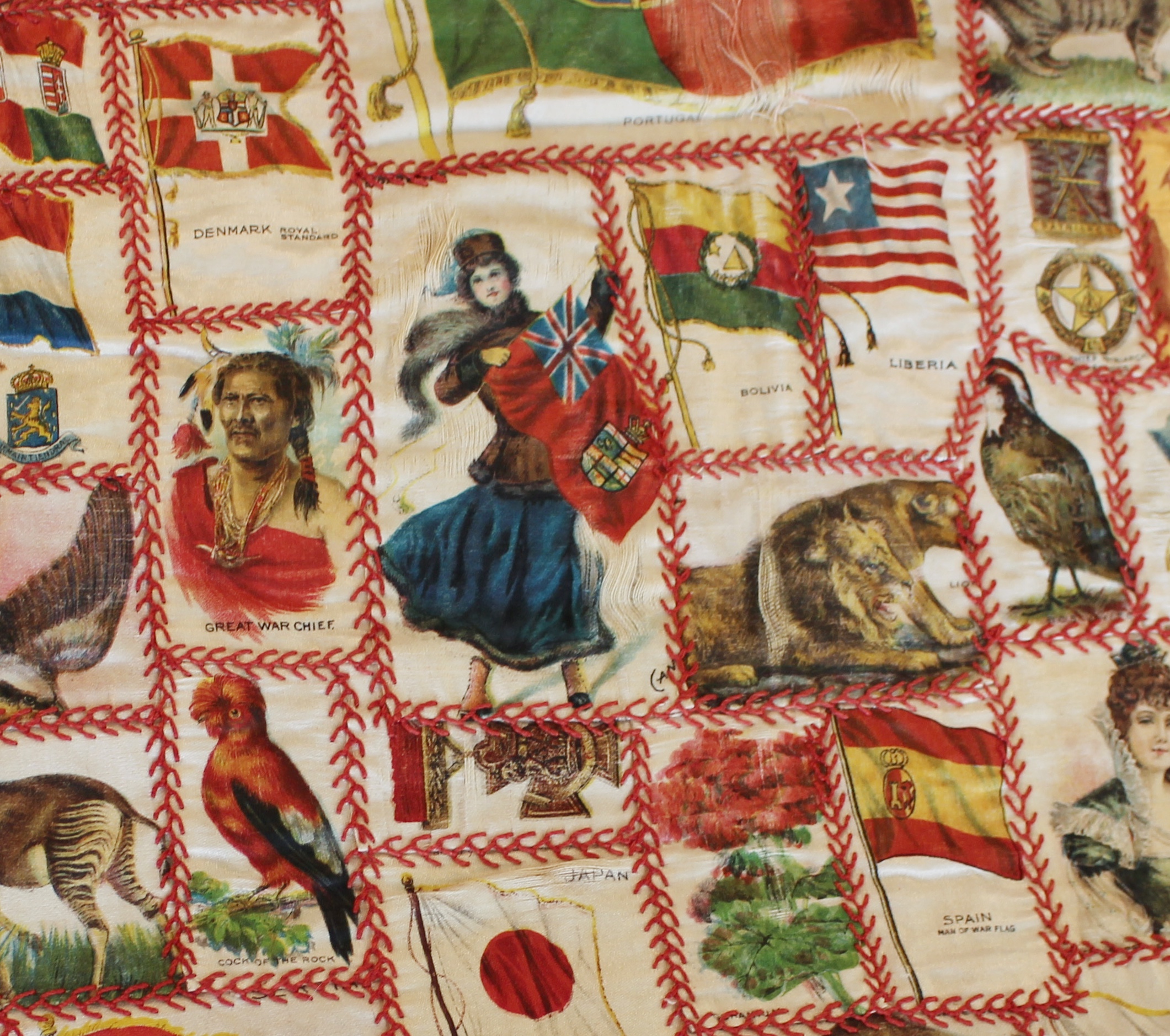
Third, the quilt is material metaphor for museums and collecting more generally. Like a museum that gathers collections from a variety of places, people, and times for the purposes of preservation and public education, this quilt is an assemblage of items all pieced together and united, removed from their original context, and used for a different purpose than originally intended. Furthermore, like the material culture inside museum walls, the silks all speak to people, places, and ideas outside the confines of a cigarette box. A woman with scarf and long skirt blowing in the wind and gracefully holding the Canadian Ensign circa 1870 sits next to a pair of roaring lions, the flags of Boliva and Liberia, and a portrait of an Indigenous man simply described as “Great War Chief.” A painted quetzal bird from Guatemala joins with a portrait of the biblical Queen Esther, a small flag for the Society Islands in the South Pacific Ocean, and a larger portrait of the Lakota warchief Rain-in-the-Face (Ité Omáǧažu). Further below that is a portrait of Queen Milena of Montenegro, found next to a macaque and a couple patches over from a quartered watermelon.
Anyone who has ever been in museum storage knows that it can be an overwhelming and thrilling experience to be in a place where so many objects from different times and places have been brought together. Although all created by cigarette companies, the representational nature of people, countries, animals, and plants in the silks creates that same relational capacity of museum storage: placing in many diverse things in relationship to eachother in one space. However, the quilt also speaks to other museum practices—objectification, selective representation, and commodities. Not only are all the places, people, and things reduced to tiny static strips of fabric, but they also reveal what people consider to be “collectible.”
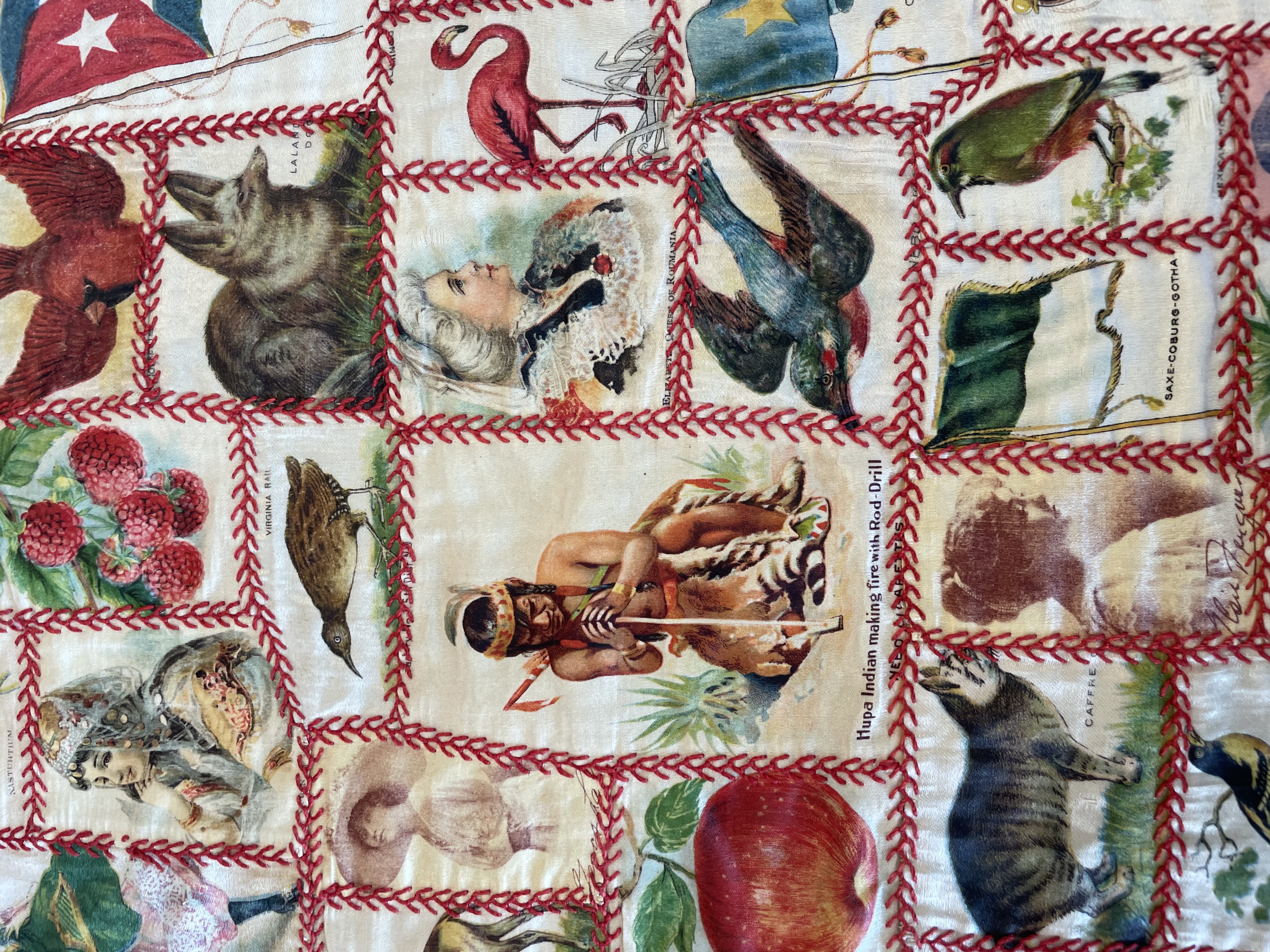
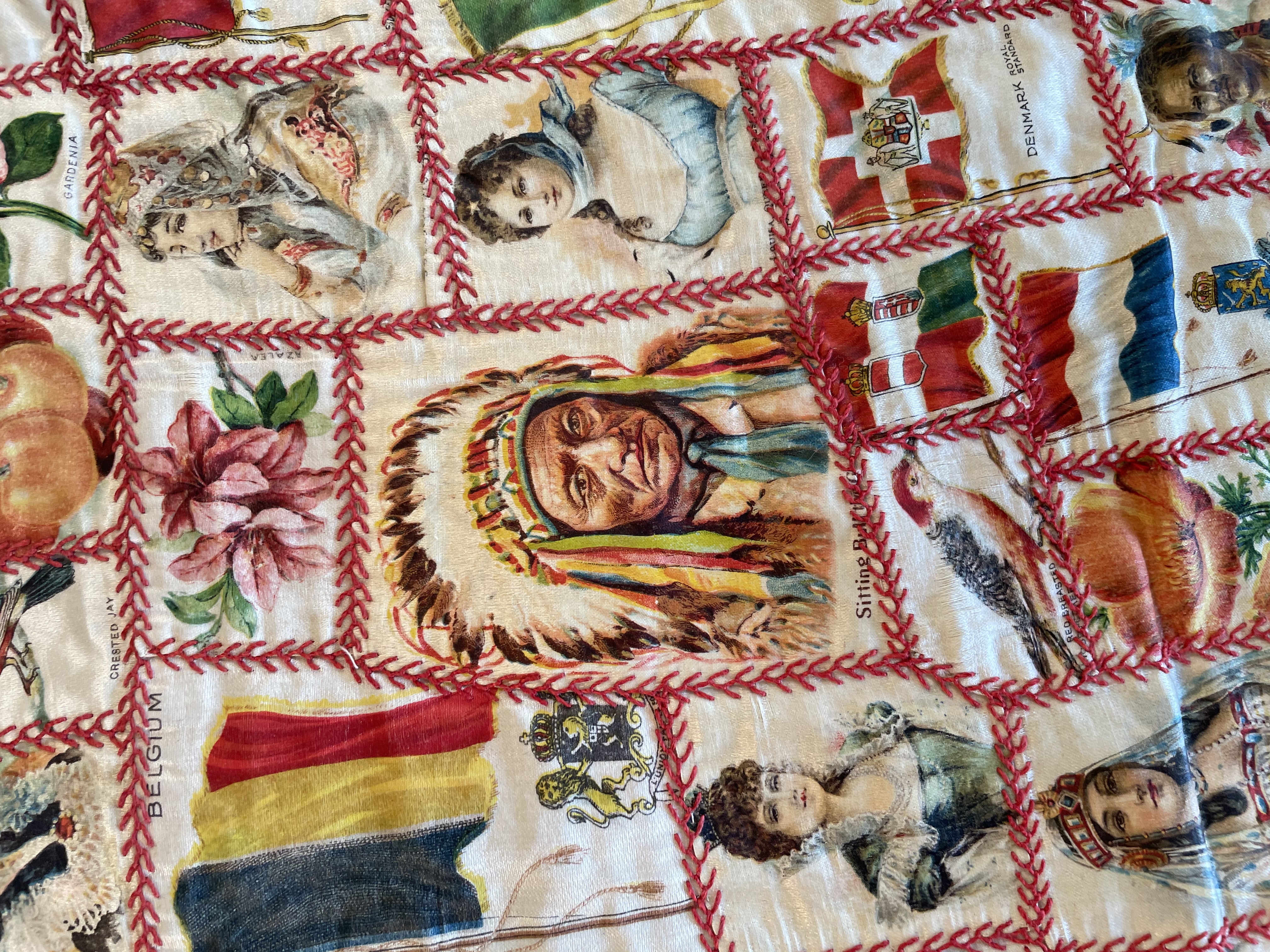
Once you notice the details of the quilt, you beginning realizing what is collected, and what isn't. Country flags are often held by white women, gracefully posing wearing clothing associated with the country. White female global leaders and artists are also represented by many portraits-in-profile, from Queen Victoria to opera singer Fanchon H. Thompson. Indigenous cultures are also regularly the subject of the silks, often in activity (such as “Hupa Indian making fire with Rod-drill”) or as portraits of warriors (such as “Sitting Bull the Greatest War Chief” - see above). All these exist alongside the many country flags and depictions of diverse plants and animals, bringing to mind a natural history museum. However, the quilt does not represet everything. For example, if you were to look closely at the entire quilt (which takes time), you would notice that only a few white men as subjects of the silks, with only one from the United States (New York Giants baseball player George Henry “Admiral” Schlei).
The quilt captures a moment when the appeal of collecting and documenting cultural difference—both in museums and in the public—was high. Highlighting famous women–particularly foreign leaders–appealed to the cigarette companies' target audience of American women. The tobacco industry also has a long history of appropriating Native people and imagery in advertisements for their own purposes. As the cigarette companies defined “the exotic” and collectible for their audiences through the imagery on collectible premiums, museums shaped “the other” through their own selective collecting practices. I could spend many hours looking at this quilt and documenting individual squares. It is not only a metaphor for museums and collecting in the past, but also museums today and in the future. Many museums, like us at the University Museum, seek for their institutions to be spaces of connection, where objects, people, and ideas come together, where we can recognize our biases, and where collections can reach beyond the confines of storage and exhibition walls. The quilt from the Boney family materializes both that selective history and that future potential.